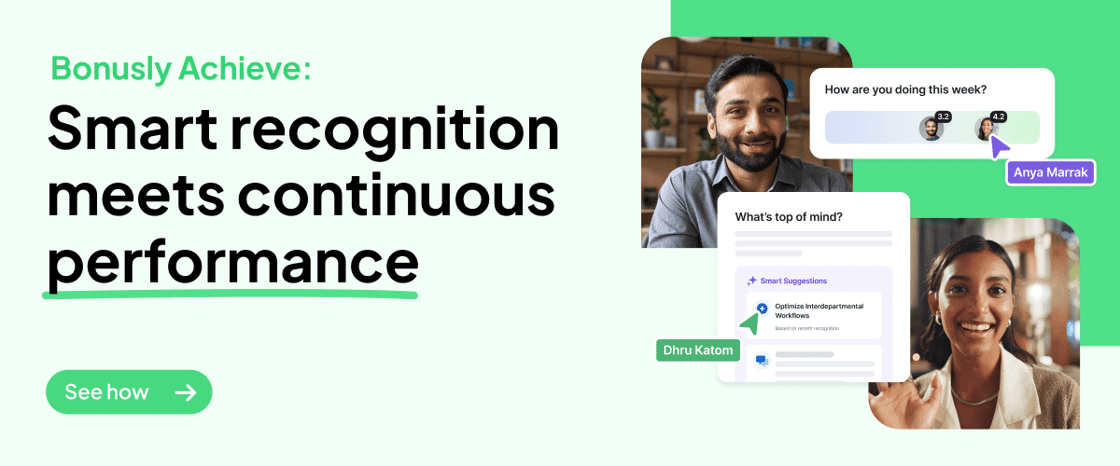Why We're Betting on Managers

I used to think I was pretty good at managing people.
When I was leading individual contributors, I could stay on top of the details. I knew what everyone was working on, could jump in to help solve problems, and used what I now recognize as "brute force execution" to drive results.
It felt manageable because the scope was contained, and honestly, I could muscle my way to good business outcomes.
Then I became a manager of managers.
Suddenly, I saw wildly different results across teams—same company, same expectations, same resources, but completely different engagement levels, performance outcomes, and retention.
That's when it hit me: managers aren't just people who happen to oversee others. They're multipliers of success.
And in most organizations, we're setting them up to fail.
The old way is broken, and we all know it
Let's be honest about traditional performance management: it's a colossal waste of time. It creates high levels of anxiety, requires excessive work over short periods, and fails to produce better outcomes.
We've all been through it. The annual or semi-annual performance review cycle is an arbitrary checkpoint completely disconnected from the actual flow of work. Managers scramble to remember what happened six months ago. Employees stress about conversations that should have been happening all along. HR chases compliance while everyone involved knows the process won’t help anyone perform better.
Here's the kicker: 98% of CHROs believe performance management doesn't work. They're not wrong.
The irony is that these reviews have a valid purpose—companies need to understand the return on their most significant investment, their people. They need to know who's performing, at what level, and how that should drive decisions about employment, promotions, and compensation.
But the way we've been executing this is fundamentally flawed.
We've been saying "continuous performance" is the answer for years, but without the right tools, what we actually did was run the look-back performance cycle more frequently.
We took an annual time-consuming, stressful process and did it quarterly.
What were we thinking?
Managers are the key—but we're not treating them that way
Through my experience in HR tech, particularly leading customer success, I've learned something crucial: managers are like Customer Success Managers for employee experience. They're accountable for both showing employees the way and facilitating their growth along their work journey to achieve not only the outcomes required of their role, but the outcomes they're seeking in their careers.
When managers are empowered, they:
- They have the right conversations with their team at the right time
- They set and reinforce clear expectations through ongoing recognition
- They keep focus on how work gets done, emphasizing company values and ways of working.
- They have frequent discussions to identify barriers and friction, helping team members overcome challenges through coaching and guidance.
A continuous performance approach gives employees the opportunity to hear feedback when it matters most—when there's actually time to course correct and achieve or exceed goals, not four months later when it's too late to make a difference.
But here's the problem: we expect all of this from managers while giving them almost none of what they need to succeed.
We're setting up managers to fail
From popular tech CEOs questioning the need for middle management to people being promoted into management roles without proper training, we've created the perfect storm for manager failure.
We give them too many direct reports, ongoing individual contributor responsibilities, antiquated processes, and outdated systems. Then, we wonder why engagement is at an 11-year low and costing us $2 trillion in lost productivity.
There are substantial gaps between what we expect of managers and the tools we give them:
- Unreasonable spans of control: Too many direct reports to actually manage effectively
- Competing priorities: They're still expected to be individual contributors while managing teams
- Broken processes: Compliance-oriented systems that don't support real coaching
- Lack of visibility: They only see a small portion of their team's actual work and impact
- No real-time tools: Everything they use is backward-looking rather than forward-enabling
Recognition: the starting signal of great performance
Here's what I've learned: recognition isn't a perk or a feel-good HR initiative. It's a leadership tool that helps managers guide teams in real time.
When recognition is public, specific, and timely, it becomes a constant pulse of what good looks like in the organization. It surfaces the work and behaviors that drive results, not just for managers, but for every team member. This creates a virtuous cycle of reinforcing the work and behaviors that actually move the business forward.
Recognition provides managers with visibility into the full body of work their employees are doing—the cross-team collaboration, the values in action, the moments of impact that would otherwise go unseen. With this broader perspective, managers can engage in more meaningful dialog about performance, provide relevant coaching, and help team members achieve their full potential.
Recognition becomes the foundation because it makes the invisible visible. It's the starting signal that tells us what's working, who's contributing, and where we should focus our development efforts.
What real-time, human-first tools actually look like
The future of management isn't about more dashboards or compliance workflows. It's about real-time, human-first tools that put people at the center of the experience.
These tools meet managers where they are—through smart integrations with the platforms they already use. They leverage AI to help managers show up at their best by prompting the right conversation topics at the right time, reminding them of key details just before check-ins, and connecting individual progress to broader team and company goals.
But here's what's crucial: these tools supplement and nurture relationships without getting in the way of the human connection. Technology should amplify great management, not replace it.
Why we're betting on managers
At Bonusly, we're betting on managers because they are the multipliers of success in every workplace. When empowered with the right tools and supportive environment, they can unlock their team's full potential and engagement.
But in most organizations today, managers are burnt out. They're navigating changing workplace dynamics across five generations, dealing with tight deadlines, reduced staffing, and evolving organizational structures—all while being expected to drive engagement and performance without the proper support.
This isn't sustainable. And it's why we believe the future belongs to organizations that invest in their managers as the key leverage point for workplace success.
What success looks like
Studies show that engaged teams lead to better bottom lines, and it’s not rocket science to connect the dots. But the domino effect of managers who are fully set up to build engaged, performing teams is bigger than you might think.
When we get this right, workplaces will be fundamentally different:
- Manager engagement will rise because they'll have the tools they need to actually succeed
- Employee engagement will follow because great managers create great employee experiences
- Performance will become predictable and sustainable rather than episodic and stressful
- Burnout will decrease for both managers and their teams
- HR teams will spend less time chasing compliance and more time enabling growth
- The anxiety around performance conversations will disappear because the work happens continuously
The time is now
For years, we've talked about continuous performance being "the way," but couldn't execute on it without the right tools and processes.
Those barriers are finally breaking down.
The concept of continuous performance is now within our grasp. We have the technology to make recognition the starting signal of great performance. We can give managers real-time visibility into their teams' contributions. We can turn every interaction into an opportunity for growth and alignment.
But it requires a fundamental shift in how we think about management, performance, and the tools we use to enable both.
We're betting on managers because when they succeed, everyone wins. The question isn't whether this shift will happen—it's whether your organization will lead it or follow it.
Ready to empower your managers with recognition-powered performance tools? The future of work depends on the choices we make today.








